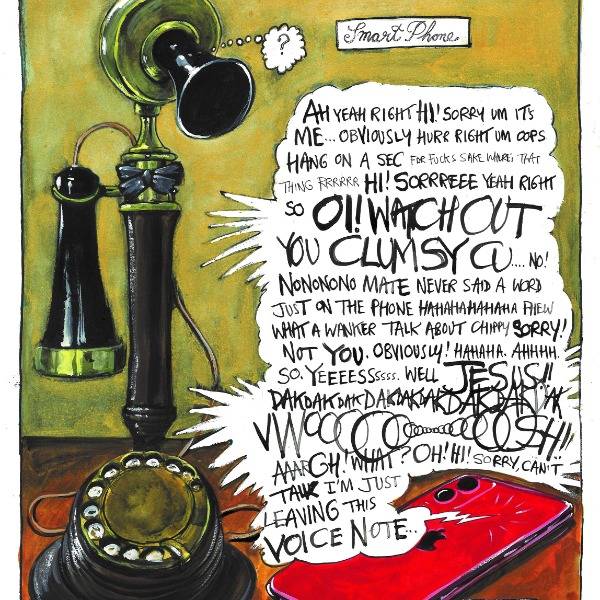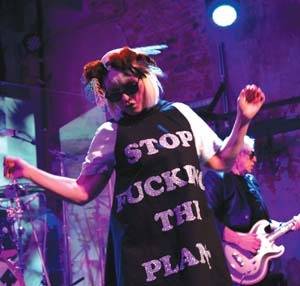
In 1970, the Canadian-American artist Philip Guston staged a show of new works at the Marlborough Gallery in New York. A friend and contemporary of the likes of Jackson Pollock and Willem de Kooning, Guston was by then a darling of Abstract Expressionism who had achieved a retrospective at the Guggenheim and represented the US at the Venice Biennale.
But the Marlborough show came as a shock to his contemporaries. In many respects the works were still recognisably Guston’s, especially in the palette – pink, electric green, sky blue and most of all “cadmium red medium”, Guston’s favourite colour – yet gone was the abstract turn he had spent the past 15 years perfecting. In its place came an array of randomly arranged, grotesque-looking objects such as books, cigarettes, shoes and – most prominent of all, appearing over 30 times – a white hood.
A white hood holding a cigarette. A white hood poised before an easel, painting a self-portrait. White hoods driving downtown in a car, a heap of dismembered legs bundled in the back. Nobody had seen the Ku Klux Klan painted in this way before; neither had they seen Guston paint anything like it.
The fallout was seismic. Guston was panned by art critics and ostracised by his closest friends, including the experimental composers John Cage and Morton Feldman, the latter of whom never spoke to him again. Many of the new works were never re-exhibited in New York and Guston lived out the last decade of his life upstate, on the fringes, before dying of a heart attack in 1980.
And yet, except for the dry observation of the critic Robert Hughes that it was “a little late in the century to mount an entire exhibition on the theme of the Ku Klux Klan”, the subject matter of Guston’s work was not the point of contention. Rather, by disposing of the style that had garnered him praise in the art world, he was in effect giving the middle finger to “all that abstract shit”, as he once put it, which just so happened to be the undisputed orthodoxy of mid-century American art.
Now, at the Tate’s life-spanning retrospective of Guston’s work – the first in over two decades to appear in the UK – that controversy has flipped. You’ll struggle to find anybody who is particularly outraged by the fact that Guston’s style evolved to look a little goofy and cartoonish; today, attention is squarely on the hoods. It’s almost as if, 50 years later, we are only beginning to look at them for the first time.
A collaboration between the Tate and three US institutions, the National Gallery of Modern Art in Washington DC and the Fine Art Museums of Boston and Houston, the show was originally slated to begin touring in 2020. In the aftermath of the murder of George Floyd at the hands of a police officer in Minneapolis, it was postponed amid anxiety that to mount a exhibition featuring so many paintings of the KKK would appear insensitive to the moment. Matters weren’t helped by the discovery there were no Black curators at the National Gallery in Washington at the time.
Yet the decision to postpone was met with its own outcry. It was opposed by Guston’s daughter, Musa Mayer, as well as the show’s original curator at the Tate, Mark Godfrey, who was suspended after he publicly criticised the move as “extremely patronising” to visitors, arguing it implied they were unable to “appreciate the nuance and politics of Guston’s works”. Godfrey later accepted voluntary redundancy. (It should be said that there was never any suggestion the show would be cancelled, but rather return at a later date when the curators felt “the powerful message of social and racial justice that is at the centre of Philip Guston’s work can be more clearly interpreted.”)
Three years later the show has finally appeared, to surprisingly little fury. We can now step back and ask: what are we looking at here, and why?
Born Philip Goldstein in Montreal in 1913, the child of Jewish Ukrainian migrants who had moved to North America to escape antisemitism, Guston was no stranger to racism and discrimination. But it was while growing up in Los Angeles that he first witnessed white supremacy in such alarming, ubiquitous expression. In the 1920s, the city council president and chief of police were open members of the Klan, and it was not unusual to see hooded parades on the street. At 17, Guston drew his first image of the KKK in a pencil sketch, “Drawing for Conspirators”, showing one Klansman fussing over a rope while a victim is being strung up and flogged in the background by others.
After formally beginning his artistic career as a muralist under the auspices of President Roosevelt’s Federal Art Project – a part of the New Deal programme that offered government-funded commissions to visual artists – Guston’s earliest works were often politically charged, with a Klansman used as his stand-in symbol for all-round evil. He was also a keen political activist at this time, joining an LA group called the Bloc of Painters who made murals across the city highlighting racial injustice.
The Tate has made an effort to highlight these formative experiences in Guston’s life by mentioning them early on in the exhibition. This is perhaps because with time, his work became overtly less political, or at the very least less activist: “I had no illusions that I could ever influence anybody politically,” he said in a talk at the Yale Summer School of Music and Art in 1974. By the time Guston had transitioned from murals to canvas painting, then from abstraction back to figuration at that fateful Marlborough show, the KKK had reappeared in much a less symbolically charged form. They were now part of a wider vocabulary of images that “lack ostentation or argument”, as Guston’s friend, the writer Ross Feld, put it: cigarettes, shoes, bulging eyeballs, gangly limbs. It was a sign that he had switched to a more intuitive, instinctual method of painting, allowing himself to be drawn to whatever he wanted without concern for an underlying message, or indeed what was expected of him by the artistic establishment.
But this is not the same as saying Guston’s art became somehow apolitical. As the initial nervousness around this retrospective shows, it is impossible to separate politics from a subject like the KKK.
Equally, it cannot be overstated how much Guston’s artistic life and times were fundamentally defined by the shift towards the abstract, which was as good as conventional wisdom in American art. This was the trajectory of some of the 20th century’s biggest names: Pollock, Mark Rothko and even – what with his beginnings in commercial illustration – Andy Warhol. Figuration came to be seen as facile. It was not reality. Things are not as they appear in a figurative painting, which by virtue of its careful composition can’t shake off that controlled, stage-managed aura of the theatre set. It did not reflect how life was really experienced, as one big mess. It was only abstraction that could adequately represent this reality, and finally get to the truth of the matter.
Except Guston realised that this wasn’t actually how we experience life, as if we are adrift in a tangle of abstract phenomena. A better analogy might be a comic book in which all the panels are out of order: we remember distinct scenes and events as self-contained occurrences, with one not strictly following on from the other, but within each recurring traits, patterns, characters, places – and most of all solid stuff. Stuff lying about. Stuff that’s just there, either in three-dimensional space or at the back of our minds. Stuff like the cigarettes Guston smoked prodigiously, or the giant stack of books on his nightstand – or the white hood that had haunted him since childhood.
For those critics of Guston’s late work, perhaps its faults lay precisely in this specificity. He had returned to a method of artmaking that related to his personal surroundings and subconscious concerns, rather than staking a claim on some lofty, ill-defined universality of experience. And for those critics – doubtless mostly middle-class and WASPish – the specifics of the KKK did not elicit the same horror as they did for an impressionable Guston in the 1920s. The threat they posed was abstract. It did not concern them. For them, the KKK were already confined to mere fantasy and caricature before Guston depicted them as such. “Who now takes the Klan as a real political force?” Hughes asked dismissively in 1970.
Fifty years on, Hughes might have been surprised to find we’re still talking about white supremacy and systemic racism, or to watch videos from as recently as 2017 of marchers in Charlottesville chanting “Jews will not replace us”. With time we now see that it wasn’t Guston who was in the wrong by choosing to paint the KKK, but the society that failed to see what was really happening.
Fast forward to now and you could say we’re better educated. At some of the US showings of this retrospective, postponement led to the inclusion of additional context, trigger warnings and means for visitors to circumvent the KKK paintings altogether. At the Tate the measures are more modest, with only a darkly painted corridor giving you an indication that the works you are about to see next are of a different nature from what you have seen before. As with the delay itself, some critics might interpret such measures as aesthetic sensibility caving to fleeting political demands. But the truth is that the politics were there all along. If anything, the fact it took a global phenomenon the scale of Black Lives Matter to force our museums to genuinely interrogate Guston’s work suggests that cultural institutions in general are never quite as enlightened as we might hope.
As the course of Guston’s own artistic development shows, change – in society, as in art – is constant. Our museums can’t do anything to stop it, but they do still have a choice to make: to be at the forefront of that change, or be condemned to always play catch-up.
This article is from New Humanist's winter 2023 issue. Subscribe now.

